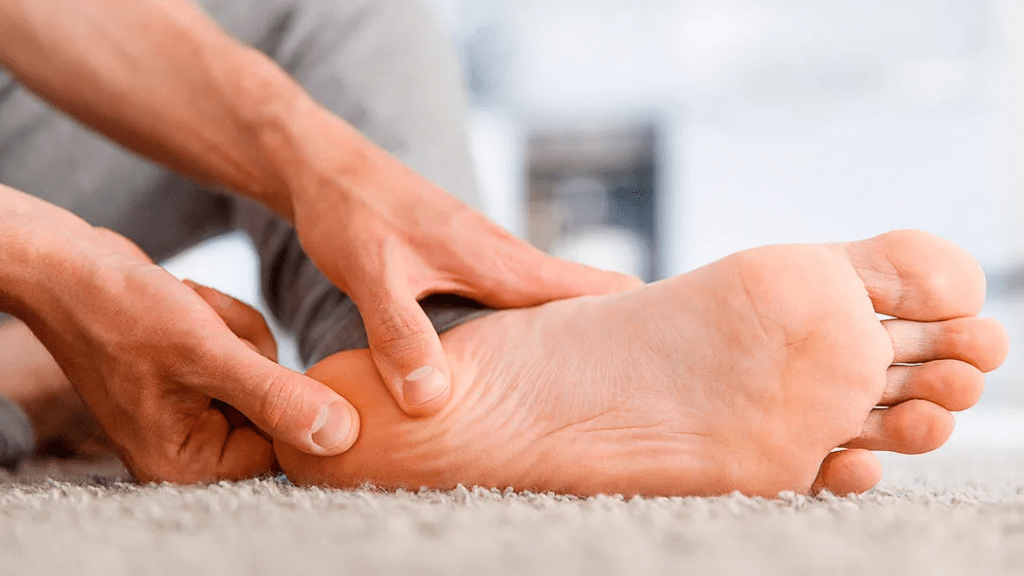Having discomfort that prevents you from moving about can interrupt normal daily life more than anything else can. Your pain can be coming from an irritated plantar fascia ligament. With your first steps in the morning, plantar fasciitis frequently generates stinging agony. The discomfort usually subsides as you rise and move around, but it could come back if you stand for a long time or get up after sitting.
Inflammation of the tissue bands that link your heel to your toes is the source of the painful ailment known as plantar fasciitis. You might have relief from a nonsurgical treatment, but in cases when the inflammation is severe, you might want to consider surgery. Each year, 60% of people seek medical attention for foot-related issues. Consider scheduling a consultation with the podiatrist Irvine if you are in search of a foot doctor.
Dr. Sima Soltani, an Irvine podiatrist with more than 20 years of expertise, specializes in non-operative therapies for foot problems. In their podiatry practice, they can cure any foot issue using the most advanced techniques, technologies, and patient care.
Their podiatrist is dedicated to providing high-quality, reasonably priced podiatric care. To give their podiatry clinic patients with excellence at each stage of their treatment and diagnosis is their shared obligation and aim with the office staff and administration.
Hence, Dr. Sima Soltani is the most professional and successful Orange County Podiatrist.
Important Information about Plantar Fasciitis:
- The most frequent cause of plantar fasciitis, or infection of the plantar fascia ligament, is strain injury, which results in micro tears in the ligament where it connects to the heel bone or other tight spots on the bottom of the foot.
- Both the physical examination and the patient’s medical history are used to make the diagnosis of plantar fasciitis.
- Plantar fasciitis can develop on its own or in conjunction with underlying illnesses.
- Treatment for plantar fasciitis involves reducing the inflammatory reaction and preventing injury.
- The condition known as plantar fasciitis is frequently confused with Baxter’s neuritis, a heel-related nerve entrapment.
Symptoms of Plantar Fasciitis:
The main signs of plantar fasciitis are:
- Heel discomfort,
- foot pain,
- stiffness, and
- tenderness
Causes of Plantar Fasciitis:
- The band of tissue known as the plantar fascia runs from the bottom of your toes to the heel bone. When walking, it cushions impact and cushions the arch of the foot.
- Small tears in the fascia can happen due to tension and stress. Even though the etiology of plantar fasciitis is often unidentified, continuous tearing or stretching of the fascia can inflame or irritate it.
Risk Factor:
You can get plantar fasciitis if:
- You have obesity or you are overweight. This is because your plantar fascia ligaments are under more strain, especially if you have gained weight quickly.
- You run a lot of distance.
- You have a profession that requires you to move around a lot, like serving in a restaurant or working in a factory.
- You have structural foot problems, such as flat feet or high arches.
- You have stiff Achilles tendons, which connect your calf muscles to the back of your heels.
- You frequently wear footwear with little arch support and soft soles.
Chronic heel discomfort brought on by untreated plantar fasciitis can make it difficult to perform daily activities. You might alter your gait to try to prevent plantar fasciitis pain that can cause issues with your feet, knees, hips, and back. Therefore, be careful to get it treated as soon as possible.
You may also like
-
Embrace the Essence of the North: Experience Clean Nicotine with Premium Nordic Spirit
-
Discover Treatment Options For Adderall Addiction in Houston, TX
-
How does body chemistry impact your response to HHC gummies?
-
Role of synthetic urine kits in laboratory calibration
-
How can nutrition support anabolic steroid results?


